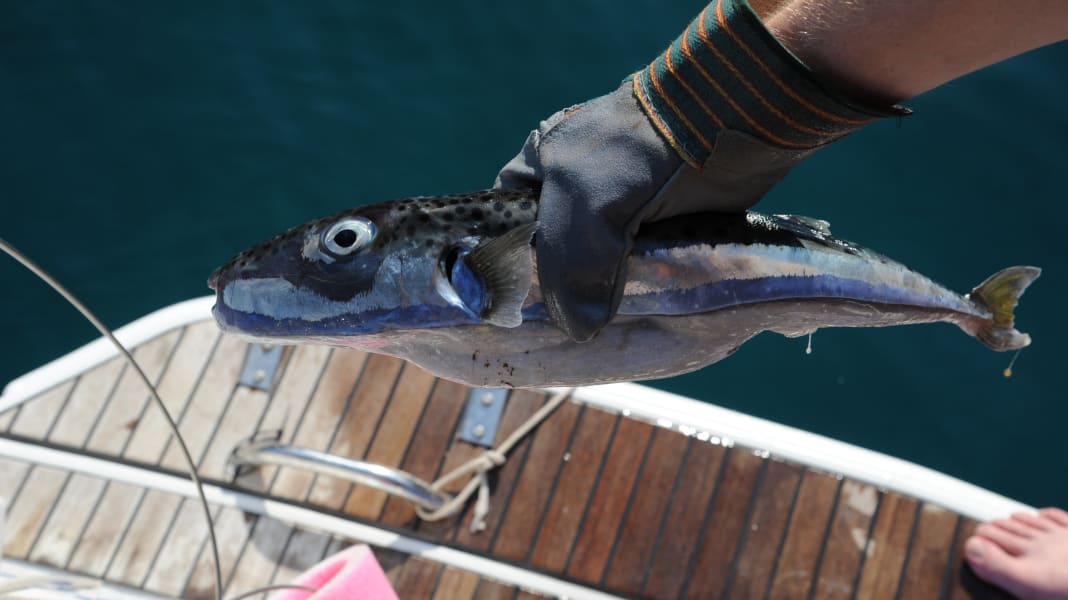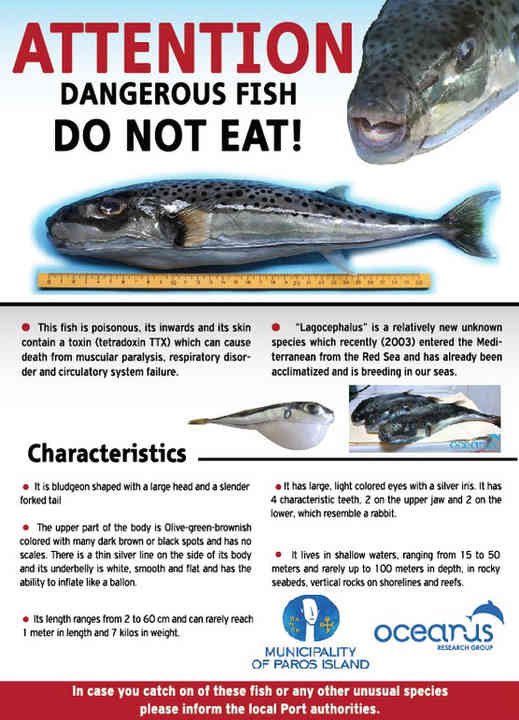
A year ago, we reported that the hare's head pufferfish was caught by fishermen off the island of Dugi Otok after it had become a real plague in Turkey and Greece, where it had also caused the first deaths among amateur anglers. Previously, it was thought that the Adriatic was too cold for the species in winter, but this is apparently no longer the case.
In May 2024, seven specimens were again caught by a fisherman, this time off the island of Ceja in the Bay of Medulin. The species has also been discovered off the coasts of Italy and Spain.
In Turkey, fish have long been such a problem that the authorities have been paying a premium for every fish delivered since 2021.
Also interesting:
Invasive species
The problem is the spread of the fish, which can grow up to 70 centimetres and weigh seven kilograms. Introduced via the Red Sea by commercial vessels, it has hardly any natural enemies in the Mediterranean. This leads to unchecked reproduction. The problem for fishermen is that the animal likes to eat their catch directly out of the nets, and as it has four huge, very strong teeth, it also bites through the meshes. This is exactly what 2022 Greek fishermen confirmed to YACHT during a trip in the Dodecanese. The fish spread quickly and can also be found in shallow waters close to the coast. The specimens they catch are getting bigger and bigger. If such a catch is then caught in the nets, the fishermen either throw it back into the sea dead or simply throw it ashore. The amazing thing is that neither cats nor seagulls nor crabs go for the carcasses. We were able to observe this in Greece. Two sizeable specimens of around 30 to 40 centimetres lay untouched on the pier for hours. The animals instinctively sense that they are in danger from the pufferfish. Otherwise, the cats are quickly present around the fishing boats, as the fishermen regularly throw them catch leftovers.

This is how poisonous the pufferfish is
The tricky thing about the fish for humans is that it cannot assume the spherical shape in the air, so only a few laypeople identify it when fishing from a boat while sailing, for example. In Greece, information posters in many harbour offices now warn of the animal, usually the so-called hare's head pufferfish. The animal produces a highly toxic neurotoxin that does not break down even when heated during cooking or frying and leads to respiratory arrest. Its skin, which can contain traces of the toxin, is also dangerous. Anyone who removes it from a fishing rod with their bare hands, for example, can already suffer the first signs of poisoning. Crews fishing from on board should therefore wear gloves when removing fish from the hook.
How to recognise the pufferfish
The pufferfish is relatively easy to recognise by its snout: it is almost boxy and has four massive incisors. There are also strangely large, flabby folds of skin on the underside, which ultimately serve to create the ball when filled with water, which is intended to either ward off enemies or prevent it from being swallowed. However, the only predators are large octopuses and some shark species.
